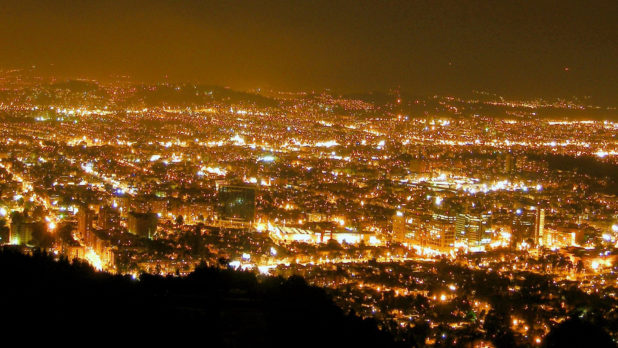Pomidor Quixote
Daily Stormer
November 24, 2019
Light pollution is the presence of man-made light in the night, and literally no one could have predicted that putting these bright lights in the dark could negatively affect insects and animals or even any lifeform that depends on natural day and night cycles.
Light pollution is helping to drive the so-called ‘insect apocalypse’, experts warn, contributing to fears that 40 per cent of all bug species will be lost within decades.
Artificial light at night can impact insects in various ways, from driving them elsewhere to changing their development and life cycles.
Declining insect numbers are having knock on effects to the global ecosystem — such as reducing North American bird numbers by 3 billion in the last 50 years.
The researchers note, however, that light pollution is — compared with other man-made environmental problems — relatively easy to address.
They encourage people to reduce their reliance on artificial lighting where possible and dim or filter outside light sources where not.
The paper is the latest in a series drawing attention to the increasingly worrying plight of the world’s insect populations.
A 2017 study, for example, reported that flying insect numbers in 63 nature protection sites in Germany had decreased by 76 per cent in the preceding 27 years.
Furthermore, various studies have predicted that around 40 per cent of insect species could become extinct within the next few decades.
A recent report puts pesticides at the center of the Insect Apocalypse and estimates that half of all bugs have been lost since 1970.
Both the use of pesticides and of artificial lights at night are likely to play big roles in the demise of bugs.
‘Light is the source of all life on this planet, a fundamental part of the perceptive ability of most animal taxa, and an environmental cue of time of day and year that has been constant throughout all of evolutionary history,’ the researchers wrote.
‘[Human-caused] changes to the natural light environment should be predicted to affect all life that has evolved within it — that is to say, almost all life on Earth.’
Artificial light is known to affect humans too, as it is often mentioned when talking about sleep disorders.
It can be considered a form of over-stimulation that increases the bad kind of stress in the body.
Daylight saving time messes up people’s sleep patterns and health, for example.
In their new paper, biologist Avalon Owens of the Tufts University in Massachusetts and colleagues synthesise the results of over 200 independent studies showing the myriad ways in which light pollution impacts the lives of insects across the globe.
‘Artificial light at night impacts nocturnal and diurnal insects through effects on development, movement, foraging, reproduction and predation risk,’ the researchers note in their paper.
Because of light pollution’s broad impact, it provides a threat that transcends individual insect species.
For example, experts believe that declining insect numbers are directly related to the loss of around 3 billion birds that feed on bugs in the US and Canada since 1970.
‘We also emphasise that artificial light at night is not merely a subcategory of urbanisation,’ the researchers added.
‘The ecological consequences of light pollution are not limited to urban and suburban centres, but widespread along roadways and around protected areas.’
Just as was the case for early climate change science, we have to take the Insect Apocalypse seriously,’ said the Zoological Lighting Institute’s James Karl Fischer.
Since climate change and global warming are basically an assortment of preposterous claims and predictions that have proven time and time again to be wrong, they are now kind of reinforcing the whole Climate Cult with other things that are actually plausible threats to the planet, like plastic contaminating water and bees dying, in an attempt to gain credibility.
It’s important to discriminate so they don’t get away with doing that.
Plastic contamination and dying bees are real problems.
You don’t have to be one of Greta Thunberg’s Climate Minions in order to oppose plastic and the death of bees.




